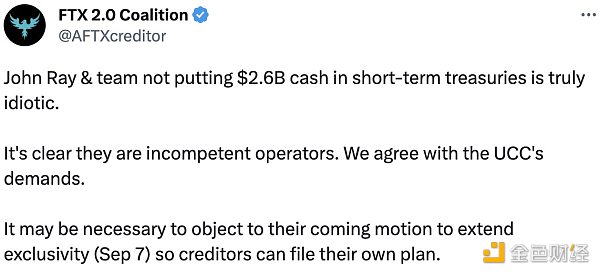ERC-6551 Protocol: Enabling NFTs to Achieve QQ-Style Combination Nesting
ERC-6551 Protocol: Enabling NFTs with QQ-Style NestingBlocking reporter Jessy
In the ETHGloble Waterloo hackathon that ended at the end of June, four of the 11 projects that made it to the finals were related to the ERC-6551 protocol. What is ERC-6551 and why has it received such high attention from developers?
According to the definition of the protocol founder, this protocol, which was born in February this year, can provide a smart contract account for each NFT token deployed in accordance with ERC-721, making the NFT with the bound account composable and able to interact with the corresponding dapp.
ERC-721 is the earliest and most basic NFT underlying protocol standard on Ethereum. People create NFTs based on ERC-721 protocol. The problem with regular ERC-721 NFTs is that they can only be owned and transferred, and cannot own other assets such as tokens or other NFTs. In addition, they cannot interact with other smart contracts. The emergence of ERC-6551 is changing all of this.
- In-depth explanation of Web3 game engine: Origins and development status of racing tracks, as well as network effects.
- An Explanation of Loopring L3: A Specific Application Rollup Deployed on a Universal Rollup
- Decoding ERC-6551: Using NFT as a linked governing smart contract
The process of transformation and innovation of the ERC-721 protocol
There have actually been innovative protocols making improvements to the ERC-721 protocol. For example, the ERC-998 protocol is a underlying protocol standard that allows any NFT to be bundled with other NFTs. Users can transfer the entire hierarchical structure and ownership when transferring NFTs. In brief, ERC-998 can include multiple tokens in ERC-721 and ERC-20 form. For example, an NFT prop in a game can include multiple ERC-721 standard tokens as well as ERC-20 token combinations (in the form of upgrades, fusions, etc.), and the ERC-998 NFT prop can be traded and transferred as a whole, greatly simplifying the ownership and transaction of NFT assets.
The ERC-3664 protocol enables NFTs to perform six core attribute operations: upgradeable, modifiable, addable, removable, splittable, and composable. That is, ERC-3664 provides NFTs with the ability to be split and combined, allowing all NFTs to be freely assembled. The initial version of the genesis release is a combination of multiple different components, similar to a LEGO set, and each component can still be sold as a complete NFT asset in the secondary market after being split.
The ERC-6551 protocol combines the functions implemented by the two protocols mentioned above. Moreover, as mentioned above, both of these protocols require the use of new protocols to publish NFTs in practice in order to achieve those functions, but the advantage of the ERC-6551 protocol is that it can transform existing NFT tokens issued using ERC-721 (rather than reissuing them) to achieve nested, disassembled, and overall equity transfer functions.
Where is the imagination of ERC-6551?
ERC-6551 creates a smart contract account for NFTs, which means we can seamlessly add new ownership layers on top of NFTs, opening up new use cases that most project creators have been wanting to add but have not found a simple way to do so on the chain. And it allows NFTs to record their on-chain history.
The history of these on-chain activities is actually a kind of equity. For example, if you mint an NFT for a project in your wallet. Later, the project decides to airdrop its ERC-20 tokens to the users who minted these NFTs, then these airdropped ERC-20 tokens will be stored in the wallet that mints the NFT. When you participate in an offline activity of the project in the real world and get the POAP (proof of attendance) provided by the project, the ERC-20 tokens and POAP you received later have nothing to do with your purchase and sale of the NFT.
But if you use the ERC-6551 protocol’s token-bound account, when you perform the above activities, the purchase and sale of the NFT can also include the purchase and sale of the airdrop and POAP you received. This is the “transfer of the entire hierarchy and ownership transfer when transferring NFTs”.
The implementation of NFT disassembly and nesting is a bit like the “dress-up” type of small game we played when we were young, such as QQ show. Currently, there are NFT projects mounted with ERC-6551, such as a “Sapienz” project. According to NFGo data, its trading volume has increased by 643% and the average price has increased by 165% in the past 24 hours due to the popularity of the ERC-6551 protocol in recent days.
ETHGloble Waterloo Introduction to ERC-6551 Protocol Projects
1. AquaNet
Award-winning homepage: https://ethglobal.com/showcase/aquanet-dzz2c
AquaNet is an AI-driven, NFT-designed social network that allows NFTs to “live” and grow unique personalities.
Using the ERC-6551 standard, NFTs are “born” in the AI-driven social media network and retain their activity records. In this network, every qualified NFT can create its own account, and GPT-3.5 will help them generate unique personalities based on the NFT’s existing metadata, such as username, profile, tone, and so on. They will be able to publish messages autonomously, express interests, and share information about themselves.
2. Fukuro
Award page: https://ethglobal.com/showcase/fukuro-3cdwv
Fukuro is an auction market created using EIP-6551, where users can place orders or bid on various “Fukuro”.
The idea of “Fukuro” comes from the concept of “Fukubukuro” in Japan, which is a mystery bag sold at a set price. “Fukuro” can contain anything that an Ethereum address can own, including NFTs, ERC-20 tokens, and more. This makes it possible to trade a variety of assets, including art collections, card sets, and even curated investment portfolios.
3. Piggybank 6551 NFT
Award page: https://ethglobal.com/showcase/piggybank-6551-nft-e2ai5
Piggybank 6551 NFT can be understood as an on-chain “piggy bank”.
Users can mint Piggybank NFTs and then deposit ETH into them by calling a pay function or sending ETH directly to the NFT’s ERC-6551 address. As the ETH balance accumulates, the color, text label, and attributes of the NFT metadata are continuously updated.
If the user wants to withdraw the ETH, the only way is to destroy the NFT – either by calling the burn function or manually sending the NFT to its ERC-6551 address.
4. Tokenbound Titans
Award page: https://ethglobal.com/showcase/tokenbound-titans-5w6oq
Tokenbound Titans is a game built on ERC-6551 that combines dynamically generated NFT NPC gameplay. Players own NFT-form NPCs, each with different abilities and characteristics.
The feature of this game is that players can use NPCs to PK each other. The algorithm for calculating the result of the battle is off-chain, but can be verified using ZK-proof. After winning a battle, the player’s NPC can be upgraded, enhancing existing attributes such as health, attack, speed, and defense, unlocking new abilities or combinations. As the NFTs are upgraded, they become more powerful and have wider uses. This evolution system increases the depth and persistence of gameplay, motivating players to develop strategies, adapt, and continuously improve their NFTs to dominate the game.
We will continue to update Blocking; if you have any questions or suggestions, please contact us!
Was this article helpful?
93 out of 132 found this helpful
Related articles
- Full Chain Online Game: Inheritance of Will MUD & Dojo
- Will Helium, favored by top encryption agencies, lead the DePIN narrative? No, it simply won’t.
- Opside ZK-PoW V2.0: ZKP Mining Supporting Multiple Chains and Rollups
- FTX sues its former chief compliance officer Dan Friedberg: what does it mean for FTX creditors?
- RWA Discussion: Underlying Assets, Business Structure, and Development Path
- Understanding ERC-6551: Has the composability of NFTs finally been achieved?
- How will the Pendle War unfold?






